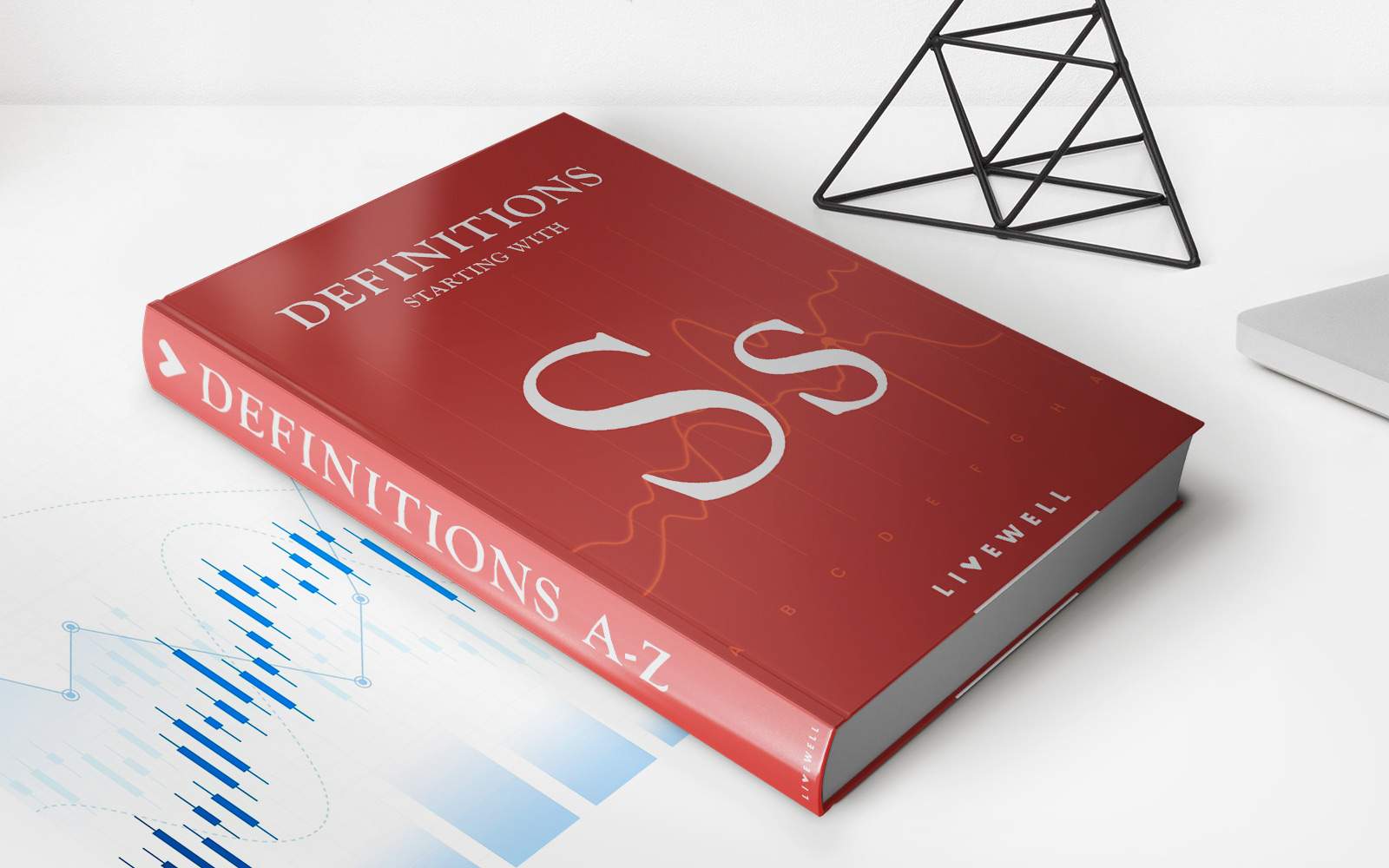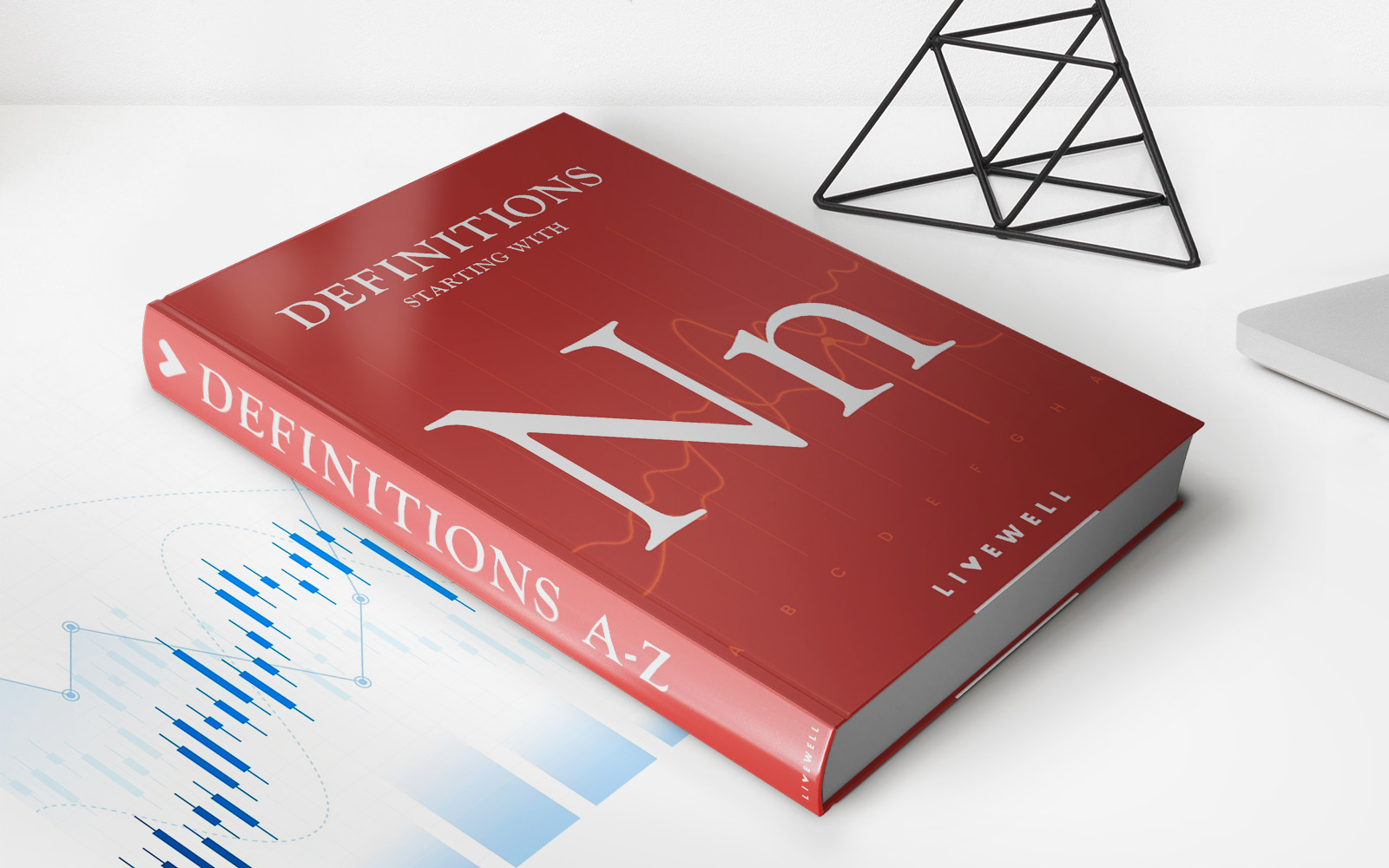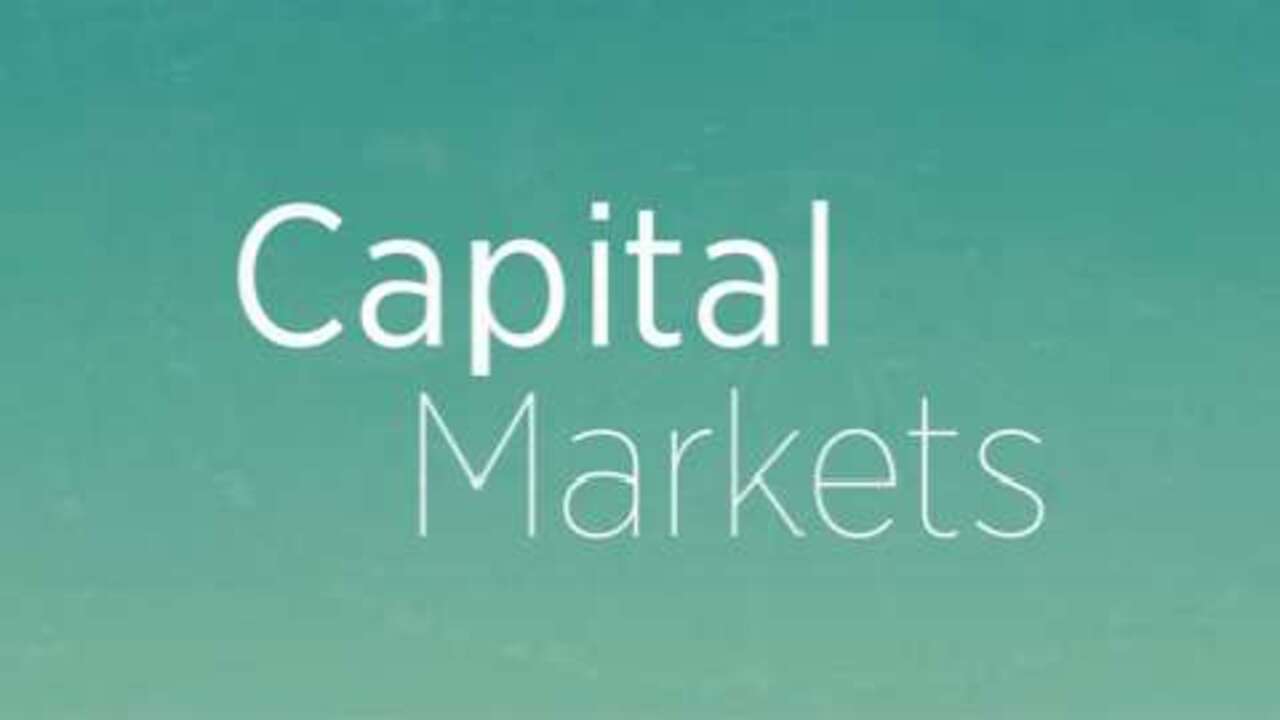

Finance
How Does Texas Debt Relief Work
Published: December 21, 2023
Discover how Texas debt relief can help you manage your finances. Learn the ins and outs of the process and take control of your financial future.
(Many of the links in this article redirect to a specific reviewed product. Your purchase of these products through affiliate links helps to generate commission for LiveWell, at no extra cost. Learn more)
Table of Contents
Introduction
In today’s fast-paced world, many individuals find themselves burdened with debt. Whether it’s credit card debt, medical bills, student loans, or other financial obligations, the weight of unpaid balances can cause extreme stress and anxiety. If you are a resident of Texas and are struggling to keep up with your debt payments, you may be wondering how to find relief.
Fortunately, Texas offers various debt relief options to help individuals regain control of their finances and work towards a debt-free future. Understanding how these options work and finding the right solution for your specific situation is crucial in easing your financial burden.
In this article, we will explore the different debt relief options available in Texas, including debt consolidation, debt settlement, and bankruptcy. We will also discuss the qualifications for debt relief and the importance of choosing a reputable debt relief company. Additionally, we will highlight the benefits and risks associated with each debt relief option.
It’s important to note that debt relief should be approached with careful consideration and guidance from professionals. While these options can provide relief and assistance in managing your debt, they may also have long-term effects on your credit score and financial standing.
By understanding the intricacies of Texas debt relief, you can make an informed decision that aligns with your financial goals and helps you navigate the path to becoming debt-free.
Understanding Texas Debt Relief
Texas debt relief refers to the various strategies and programs available to residents of Texas who are struggling with overwhelming debt. These debt relief options aim to provide individuals with a pathway to regain control of their finances and alleviate the burden of unpaid debts.
When considering debt relief in Texas, it’s important to understand that it is not a magic solution that will instantly eliminate all your debts. Instead, it offers strategies and assistance to help you manage and reduce your debts over time.
Debt relief options typically involve negotiating with your creditors to lower interest rates, establish more manageable payment plans, or possibly even reduce the total amount owed. Such negotiations can be complex and time-consuming, requiring the expertise of professionals who are knowledgeable in dealing with creditors and debt collection agencies.
There are several debt relief options available in Texas, including debt consolidation, debt settlement, and bankruptcy. Let’s explore each option in more detail:
- Debt Consolidation: Debt consolidation aims to simplify your financial situation by combining multiple debts into a single loan, often with a lower interest rate. This allows you to make one monthly payment instead of several, making it easier to manage your debts.
- Debt Settlement: Debt settlement involves negotiating with your creditors to settle your debts for less than the total amount owed. This option can be helpful if you are struggling to make payments but have a lump sum of money available to offer as a settlement.
- Bankruptcy: Bankruptcy should be considered as a last resort as it has long-term consequences on your credit score and financial standing. However, it can provide a fresh start for individuals with overwhelming debt that cannot be repaid through other means. It’s important to consult with a bankruptcy attorney to understand the specific implications of filing for bankruptcy.
It’s crucial to understand that each debt relief option has its own pros and cons, and what works for one person may not be the best option for another. Therefore, it’s essential to carefully evaluate your financial situation, consider your long-term goals, and seek professional advice before deciding which debt relief option is most suitable for you.
Now that we have a basic understanding of Texas debt relief, let’s dive deeper into each option and explore how they work, their qualifications, and the potential benefits and risks associated with them.
Types of Debt Relief Options in Texas
When it comes to tackling overwhelming debt in Texas, residents have several debt relief options to choose from. Understanding the different types of debt relief available can help you make an informed decision and choose the path that best fits your financial situation. Let’s explore the most common debt relief options in Texas:
- Debt Consolidation: Debt consolidation involves taking out a new loan to pay off multiple existing debts, such as credit card bills, medical bills, or personal loans. By consolidating your debts, you can streamline your monthly payments into one, usually at a lower interest rate. This option simplifies your finances and can help you pay off your debts faster.
- Debt Settlement: Debt settlement involves negotiating with your creditors to settle your debts for less than the total amount owed. Instead of paying off the full balance, you offer a lump sum payment or agree to a structured payment plan. Debt settlement can help reduce the total amount you owe, but it may have an impact on your credit score and require you to have a significant amount of funds available for negotiation.
- Bankruptcy: Bankruptcy should be considered as a last resort when all other options have been exhausted. It involves declaring that you are unable to repay your debts and seeking legal protection from your creditors. There are two common types of bankruptcy for individuals in Texas: Chapter 7 and Chapter 13. Chapter 7 involves liquidating your assets to pay off your debts, while Chapter 13 involves creating a repayment plan to pay off a portion of your debts over time.
Each debt relief option has its own set of qualifications and considerations. For debt consolidation, you typically need a good credit score and a steady source of income to qualify for a loan with favorable terms. Debt settlement may require you to prove financial hardship and have a sizeable sum available for negotiation. Bankruptcy has specific eligibility criteria outlined by federal law, and it’s crucial to consult with a bankruptcy attorney to determine if you qualify.
Before choosing a debt relief option, it’s essential to assess your financial situation, consider the long-term consequences, and seek professional guidance. Debt relief companies and financial advisors can provide valuable insights and help you navigate the complexities of each option.
It’s important to note that not all debt relief companies are reputable. Be cautious of companies that make unrealistic promises or charge exorbitant fees upfront. Research and read reviews to ensure you choose a trustworthy and experienced debt relief provider.
Now that we’ve explored the different types of debt relief options in Texas, let’s dive deeper into the specifics of each option, including the qualification requirements and potential benefits and risks.
Debt Consolidation in Texas
Debt consolidation is a popular debt relief option in Texas for individuals who are struggling to manage multiple debts. It involves combining all of your outstanding debts into a single loan, which is then used to pay off your existing creditors. This consolidation simplifies your finances by consolidating multiple payments into one monthly payment.
There are several ways to consolidate your debts in Texas:
- Personal Loans: You can apply for a personal loan from a bank, credit union, or online lender. If approved, you can use the loan proceeds to pay off your debts, leaving you with a single loan and a single monthly payment. Personal loans generally have fixed interest rates and repayment terms, making it easier to budget and plan your monthly payments.
- Balance Transfer: If you have high-interest credit card debt, you can transfer the balances to a new credit card with a lower interest rate. Many credit card companies offer promotional balance transfer rates, often with zero percent interest for a specified period. By transferring your balances, you can save on interest and consolidate your credit card debts into one account.
- Home Equity Loans or Lines of Credit: If you own a home in Texas, you may qualify for a home equity loan or a home equity line of credit (HELOC). These loans allow you to borrow against the equity in your home and use the funds to pay off your debts. Home equity loans typically have lower interest rates compared to credit cards or personal loans, but they require you to use your home as collateral.
Before pursuing debt consolidation in Texas, it’s important to consider the qualifications and potential benefits and risks:
Qualifications: To qualify for a debt consolidation loan or balance transfer, you generally need a good credit score and a stable income. Lenders will assess your creditworthiness and ability to repay the loan based on factors such as your credit history, income, and debt-to-income ratio. For home equity loans, you will need sufficient equity in your home and a low loan-to-value ratio.
Benefits: Debt consolidation offers several benefits for Texas residents. By consolidating your debts, you simplify your monthly payments, making it easier to manage your finances. You may also secure a lower interest rate, which can save you money on interest charges over time. Debt consolidation can improve your credit score if you make regular payments on your consolidated loan.
Risks: It’s important to be aware of the potential risks of debt consolidation. If you fail to make payments on your consolidation loan, it can lead to further financial difficulties and damage your credit score. Additionally, some debt consolidation options may extend your repayment term, resulting in more overall interest paid over time. It’s crucial to choose a reputable lender with transparent terms and conditions and to create a budget to ensure you can afford the consolidated loan payments.
Before pursuing debt consolidation in Texas, consider consulting with a financial advisor or a debt relief specialist who can guide you through the process and help you determine if it’s the right option for your financial situation.
Debt Settlement in Texas
Debt settlement is a debt relief option in Texas that involves negotiating with your creditors to settle your debts for less than the total amount owed. This option is suitable for individuals who are facing financial hardship and are unable to make regular payments on their debts.
The debt settlement process typically involves the following steps:
- Evaluation: You assess your financial situation and determine if debt settlement is the right option for you. It’s important to consider factors such as the severity of your debt, your ability to make monthly payments, and the potential impact on your credit score.
- Saving for Settlement: You start setting aside funds in a designated savings account to negotiate with your creditors. This requires discipline and dedication to save a significant amount that can be used for settlement offers.
- Negotiation: With the help of a debt settlement company or on your own, you negotiate with your creditors to accept a reduced amount as full satisfaction of your debt. The negotiation process can be complex and may involve multiple rounds of discussions to reach a mutually acceptable settlement amount.
- Settlement Offers: Once an agreement is reached, you make a lump sum payment or a series of payments to satisfy the settled amount. Once the settlement amount is paid, the debt is considered resolved.
- Credit and Documentation: It’s important to obtain documentation from your creditors stating that the debt has been settled. This documentation is crucial in case of any future disputes or credit reporting inaccuracies.
While debt settlement can provide a way to reduce your overall debt burden, it’s important to consider the qualifications and potential benefits and risks:
Qualifications: Debt settlement is typically pursued by individuals who are experiencing financial hardship and are struggling to make regular payments on their debts. The ability to negotiate a successful settlement may depend on factors such as the severity of your financial hardship, the age of your debts, and the willingness of your creditors to consider a settlement offer.
Benefits: Debt settlement can offer some advantages. It allows you to resolve your debts for a reduced amount, potentially saving you a significant sum of money. Debt settlement can also provide relief from the stress of dealing with creditors and collection agencies and give you the opportunity to regain control of your finances.
Risks: Debt settlement also carries certain risks. It may have a negative impact on your credit score since settling debts for less than the full amount can be viewed negatively by lenders. Additionally, there is no guarantee that your creditors will agree to a settlement, and the negotiation process can take time, during which interest and fees may continue to accrue on your debts.
If you’re considering debt settlement in Texas, it’s important to seek guidance from a reputable and experienced debt settlement company. They can provide you with the necessary expertise and negotiate on your behalf to achieve the best possible settlement outcome.
Bankruptcy in Texas
Bankruptcy is a legal process that provides individuals in Texas with a fresh start by eliminating or restructuring their debts. While it should be considered as a last resort, bankruptcy can be a viable debt relief option for individuals who have exhausted all other possibilities and are unable to repay their debts.
In Texas, there are two common types of bankruptcy for individuals:
- Chapter 7 Bankruptcy: Also known as “liquidation bankruptcy,” Chapter 7 involves the liquidation of your non-exempt assets to repay a portion of your debts. Certain assets, such as your primary residence, personal belongings, and retirement accounts, may be exempt from liquidation. The remaining qualifying debts are typically discharged, meaning you are no longer legally obligated to repay them.
- Chapter 13 Bankruptcy: Also known as “reorganization bankruptcy,” Chapter 13 involves creating a repayment plan to pay off a portion of your debts over a three to five-year period. This option allows you to keep your assets while making affordable monthly payments based on your income and expenses. Once you complete the repayment plan, any remaining qualifying debts may be discharged.
Before considering bankruptcy in Texas, it’s crucial to understand the qualifications and potential benefits and risks:
Qualifications: To file for bankruptcy, you must meet certain eligibility criteria. These criteria include completing a means test to determine if your income falls below the state median income and whether you have the ability to repay your debts. Additionally, attending credit counseling is typically mandatory before filing for bankruptcy.
Benefits: Bankruptcy offers several benefits for individuals in Texas. It provides immediate relief from collection actions, such as phone calls and lawsuits, through an automatic stay. Bankruptcy can eliminate certain types of unsecured debts, giving you a fresh financial start and the opportunity to rebuild your credit over time.
Risks: It’s important to note that bankruptcy has long-term consequences. It will negatively impact your credit score and remain on your credit report for several years, making it challenging to obtain new credit or loans. Additionally, not all debts are dischargeable through bankruptcy, such as certain tax debts, student loans, and child support payments. It’s essential to consult with a bankruptcy attorney to fully understand the specific implications of bankruptcy in your situation.
When considering bankruptcy, it is strongly recommended to consult with an experienced bankruptcy attorney who can guide you through the process, ensure you meet all legal requirements, and help you make an informed decision about the best course of action.
Qualifying for Debt Relief in Texas
Qualifying for debt relief in Texas depends on the specific debt relief option you are considering. Each option has its own set of qualifications and criteria that determine whether you are eligible for assistance. Understanding these qualifications can help you determine which debt relief option is the most suitable for your financial situation.
Here are some general considerations for qualifying for debt relief in Texas:
- Debt Consolidation: To qualify for a debt consolidation loan, you generally need a good credit score and a stable income. Lenders will assess your creditworthiness through factors such as your credit history, income, and debt-to-income ratio. If you have a poor credit score or do not meet the income requirements, you may find it challenging to qualify for a favorable debt consolidation loan.
- Debt Settlement: Qualifying for debt settlement typically requires demonstrating financial hardship and the inability to make regular payments on your debts. Debt settlement companies may require you to provide proof of financial hardship, such as evidence of job loss, significant medical expenses, or other unexpected financial burdens. Additionally, some debt settlement programs may require you to accumulate a specified amount of savings before they initiate negotiations with your creditors.
- Bankruptcy: Qualifying for bankruptcy in Texas involves meeting specific eligibility criteria outlined by federal law. To file for Chapter 7 bankruptcy, you must pass a means test, which compares your income to the state median income. If your income falls below the state median, you may qualify for Chapter 7. However, if your income exceeds the state median, you may be required to file for Chapter 13 bankruptcy, which involves creating a repayment plan based on your income and expenses.
It’s important to note that different debt relief companies or organizations may have additional requirements or specific criteria for their programs. When seeking debt relief assistance, it’s essential to research and choose a reputable organization that has transparent eligibility guidelines.
Before pursuing any debt relief option in Texas, it’s recommended to consult with a debt relief professional who can assess your financial situation and help determine the most appropriate course of action. They can guide you through the qualification process and provide guidance on the best debt relief option based on your specific circumstances.
Remember, qualifying for debt relief is just the first step. It’s equally important to carefully consider the potential benefits and risks of each option, weigh the long-term impact on your credit, and ensure you can sustain the commitments and obligations associated with the chosen debt relief program.
Choosing a Debt Relief Company in Texas
Choosing a reputable debt relief company in Texas is crucial when seeking assistance with your financial situation. The right company can provide the necessary expertise and guidance to help you navigate the complexities of debt relief, while protecting your best interests. Here are some factors to consider when selecting a debt relief company:
- Research and Reviews: Conduct thorough research on various debt relief companies operating in Texas. Read reviews and testimonials from previous clients to get a sense of their experiences and satisfaction with the company’s services. Look for certifications and accreditations from reputable industry associations as a reflection of the company’s professionalism.
- Transparency and Ethics: Ensure that the debt relief company is transparent about their services, fees, and any potential risks associated with the debt relief program. Beware of companies that make unrealistic promises or guarantee specific outcomes. Look for a company that educates you about your options and provides honest advice based on your financial situation.
- Experience and Track Record: Consider the company’s experience and track record in the debt relief industry. Find out how long they have been in operation and their success rate in negotiating favorable settlements or helping clients through the bankruptcy process. An experienced company will have the knowledge and connections necessary to navigate the complexities of debt relief effectively.
- Professionalism and Communication: Pay attention to the company’s level of professionalism and the quality of their communication. A reputable debt relief company will provide clear and concise explanations of the debt relief process, answer your questions, and keep you informed throughout your journey towards financial recovery.
- Fee Structure: Understand the company’s fee structure and ensure it is reasonable and transparent. Reputable companies typically charge fees based on the services rendered and the results achieved. Avoid companies that require high upfront fees or charge exorbitant monthly fees, as this may indicate a potential scam.
- Free Consultation: Look for a debt relief company that offers a free consultation to evaluate your financial situation and provide personalized advice. This consultation allows you to assess their expertise and professionalism before committing to their services.
It’s important to note that the choice of a debt relief company is a personal decision, and what works for one person may not work for another. Trust your instincts and choose a company that aligns with your values and priorities.
Lastly, always verify the credentials and licenses of the debt relief company. Check if they are registered with relevant authorities and verify their compliance with state and federal regulations. This will help ensure that you are working with a legitimate and trustworthy organization.
Remember, debt relief is a significant decision, and choosing the right company to guide you through the process can make a significant difference in your financial journey. Take the time to research, compare options, and select a reputable debt relief company that can provide the support and assistance you need to achieve your financial goals in Texas.
Benefits and Risks of Texas Debt Relief
Texas debt relief options can provide significant benefits for individuals struggling with overwhelming debt. However, it’s crucial to understand that these options also come with certain risks. Evaluating the advantages and potential drawbacks can help you make an informed decision about pursuing debt relief in Texas. Let’s explore the benefits and risks:
Benefits of Texas Debt Relief:
- Reduced Financial Burden: Debt relief options in Texas can help reduce your overall financial burden by lowering interest rates, negotiating lower settlement amounts, or providing a structured repayment plan.
- Simplified Finances: Debt consolidation, for example, allows you to combine multiple debts into a single monthly payment, making it easier to manage your finances and stay organized.
- Stop Collection Actions: When you seek debt relief, collection actions such as harassing phone calls and legal proceedings are often halted due to the automatic stay provided by bankruptcy or the negotiation process in debt settlement.
- Fresh Financial Start: For individuals who are overwhelmed with debt and unable to repay their obligations, debt relief can provide a fresh start for rebuilding their financial life and working towards a debt-free future.
- Professional Guidance: Working with reputable debt relief companies or professionals can provide valuable guidance and expertise throughout the process, ensuring you make informed decisions and choose the best course of action for your specific situation.
Risks of Texas Debt Relief:
- Impact on Credit Score: Debt relief options can have a negative impact on your credit score. Bankruptcy, for instance, can remain on your credit report for up to 10 years, making it difficult to obtain new credit or loans. Debt settlement can also reflect negatively on your credit report, especially if you settle for less than the full amount owed.
- Potential Tax Consequences: Depending on the specific debt relief option and the forgiven or canceled debt, there may be potential tax consequences. For example, forgiven debt through debt settlement may be considered taxable income by the Internal Revenue Service (IRS).
- Long-Term Financial Impact: Debt relief options such as debt consolidation or settlement may extend your repayment period, resulting in more interest paid over time. It’s essential to carefully evaluate the long-term financial implications before committing to any debt relief option.
- Potential Scams: There are unscrupulous debt relief companies that make false promises or operate scams targeting vulnerable individuals. It’s crucial to research and choose reputable companies to ensure you receive legitimate assistance and avoid falling victim to fraudulent practices.
- Eligibility and Qualification Requirements: Not everyone may be eligible for every debt relief option. Qualifying for certain programs may depend on factors such as credit score, income, and the severity of your financial hardship. It’s important to assess your qualifications and explore alternative solutions if you do not meet the criteria for a specific debt relief option.
It’s essential to thoroughly assess the benefits and risks of Texas debt relief, considering your individual circumstances and long-term financial goals. Seeking advice from a financial advisor or debt relief professional can provide valuable insights and help you make an informed decision that aligns with your needs and objectives.
Conclusion
Dealing with overwhelming debt can be incredibly challenging, but residents of Texas have access to a variety of debt relief options to help them regain control of their finances. Understanding the different options available and the qualifications required is essential in choosing the right path towards financial freedom.
Debt relief options such as debt consolidation, debt settlement, and bankruptcy offer various benefits and risks. Debt consolidation simplifies finances by combining multiple debts into one, potentially reducing interest rates. Debt settlement can provide an opportunity to negotiate lower settlement amounts, while bankruptcy offers a fresh start by eliminating or restructuring debts.
However, it’s important to carefully consider the potential risks associated with debt relief. Negative impacts on credit scores, tax consequences, and extended repayment periods are among the possible drawbacks. It’s crucial to weigh the benefits and risks, and seek advice from reputable debt relief professionals who can guide you through the process.
When selecting a debt relief company, conducting comprehensive research and evaluating their transparency, expertise, and track record are essential. Choosing a reputable company can make a significant difference in your debt relief journey.
Remember, debt relief is not a one-size-fits-all solution. It’s important to assess your financial situation, understand your goals, and seek personalized advice to determine the most appropriate debt relief option for you.
By taking the necessary steps to address your debt and choosing the right debt relief option, you can work towards achieving financial stability and a debt-free future in Texas.














